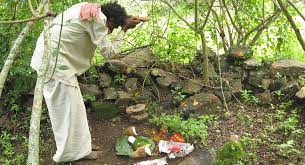Around much of the world, as the various European countries expanded their empires, one of the first things that Europeans did, was to create reserves to protect the wildlife, and required the local people to move out.

In many of these places, the local tribes were forcefully thrown of their land, and begrudgingly given small areas often with little value compared to where they lived before.
Now there is a difficult issue: those people who are living their lives in the same way that they have lived for thousands of years, are often fantastic for the reserve. However, in many places these people will turn to harvesting the wildlife in a totally different way, leading to many local extinctions.

In this instance, the Soliga tribe was allowed to live within the Biligiri Rangaswamy Temple Tiger reserve in South Eastern Karnataka – the first place in India where this was allowed.
It is certainly true that each place is different, but what is also clearly true is that in many places local tribes are the best conservationists, having being living in equilibrium with local wildlife for thousands of years. The tiger number have grown from 35-68. Interestingly, the tribal people have been allowed to live not only in the peripheral areas, but also deep in the core of the reserve – the area that India has most stringent rules in any of their reserves.
Alarmingly the National Tiger Conservation Authority tried to suppress and discredit this information. Importantly, this tribe worship the Tiger as gods, and they have not had any incidents of hunting of the tigers or conflict between the tribe and the tigers.
Can this be replicated elsewhere? I believe that this would certainly be possible in places. What is clear though is that these people need to have remained largely living in their historical way – those groups who have left the land for some time, and then returned are often not good managers of the land (I have seen places where the tribal leader has become rich while the rest of the tribe has lost their rights – and the tribal land has been turned over to tourism).











